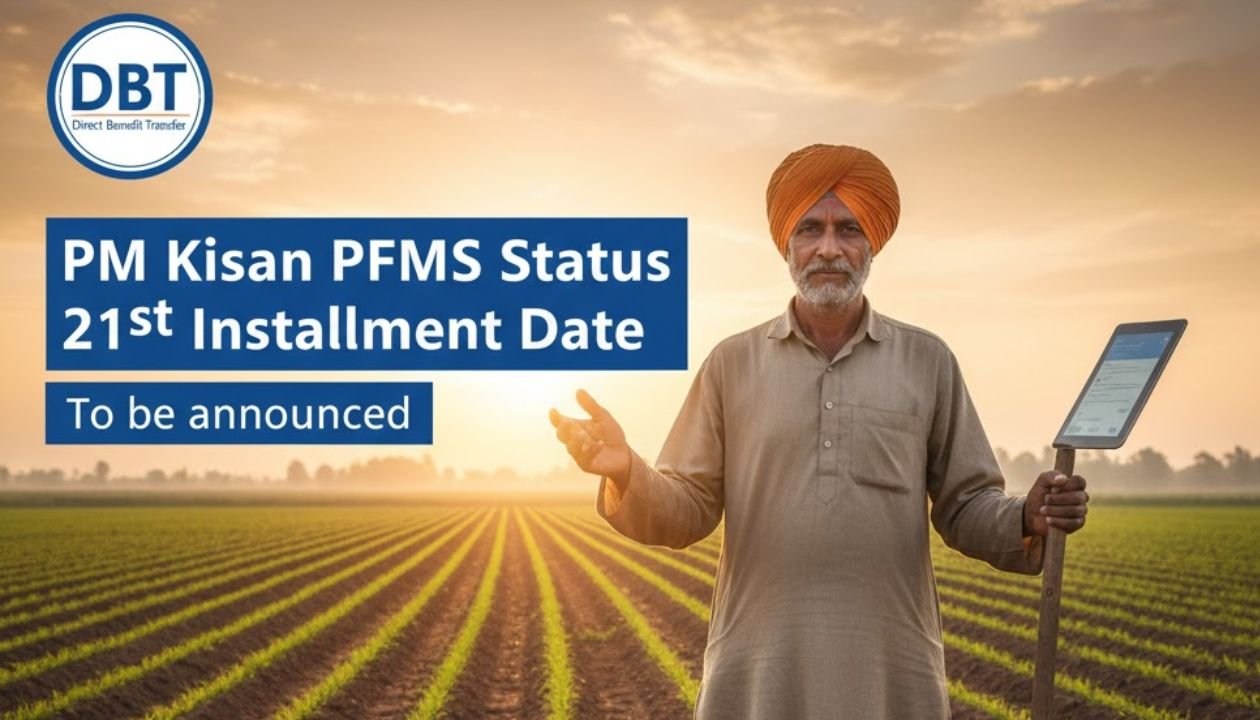PM Kisan PFMS Status :- The Indian government has launched several schemes to support farmers and improve their financial condition. So one of the major initiatives by them is to launch the PM Kisan Samman Nidhi Yojana. In this scheme, the government sends money directly to the bank account of farmers. So to ensure transparency and timely payments, the government uses a system called PFMS. So under this article, we will discuss about PFMS portal, how it works, how it helps farmers check their installment status, and also to know about PM Kisan PFMS Status. Keep reading this article till end.
Contents
- 1 What is PFMS Portal?
- 1.1 Objective of PM Kisan PFMS Status
- 1.1.1 How to Check PFMS Status for PM Kisan Installments Payment?
- 1.1.2 What is PM Kisan Yojana?
- 1.1.3 Short Overview of PM Kisan PFMS Status
- 1.1.4 Eligibility Criteria
- 1.1.5 PM Kisan 20th Installment Released
- 1.1.6 PM Kisan 21st Installment Status Check Online at pfms.nic.in
- 1.1.7 PM-Kisan e-KYC for Farmers
- 1.1.8 All PM Kisan Installments Release Dates
- 1.1.9 Required Documents
- 1.1.10 Helpline Number
- 1.1.11 FAQs
- 1.1 Objective of PM Kisan PFMS Status
What is PFMS Portal?
PFMS stands for Public Financial Management System. This platform is launched by the Ministry of Finance, Government of India. The main thing that PFMS do is monitor and manage the money that the government spends on various schemes. It keeps track of money and ensures that the funds reach the right people at the right time.
When it comes to PM Kisan, PFMS plays a very important role in checking whether the installment has been transferred successfully to the farmer’s bank account or not. So with the help of this PFMS Portal, farmers can check if they have received the money or if it is still being processed.
Objective of PM Kisan PFMS Status
The main purpose of checking PM Kisan status through PFMS is to track whether the money has reached the beneficiary’s account or not. If it has not been transferred, then to know whether the payment is pending, failed. Through this portal, the confusion and delay in payment updates that farmers face can be avoided. Also, through this portal government and the public will make sure that there’s no fraud or wrong transfer of funds happens. It also gives confidence to the farmers that their installment is being processed or has already been credited.
How to Check PFMS Status for PM Kisan Installments Payment?
- Visit the PFMS official website: Go to https://pfms.nic.in
- On the homepage, Click on Know Your Payments.

- Enter Your Bank Details like Select your bank name from the dropdown, Enter your bank account number, and the Captcha code.
- After this Click on Search.
- After that, the website will show you the current status of your PM Kisan installment. It will show details like whether the amount is credited, under processing, or failed due to any reason.
What is PM Kisan Yojana?
PM Kisan Samman Nidhi Yojana is a Central Government scheme started in December 2018. Under this scheme, the government gives Rs. 6,000 per year to small and marginal farmers in three equal installments of Rs. 2,000 each and is directly transferred to the farmer’s bank account. The main aim behind launching this scheme is to provide some financial help to farmers so they can manage agricultural expenses like seeds, fertilisers, and other farming needs.
Short Overview of PM Kisan PFMS Status
| Name of Portal | PM Kisan Samman Nidhi Yojana |
| Launched by | Government of India |
| Benefits | Rs 6000 per year in 3 installments |
| Mode of Payment | Direct Bank Transfer |
| Beneficiaries | Farmers across India |
Eligibility Criteria
- The applicant should be a small or marginal farmer
- The farmer should be an Indian citizen
- They must own cultivable land
- Government employees, income tax payers, and professionals like doctors, engineers, and lawyers are not eligible.
PM Kisan 20th Installment Released
The government has now released the 20th installment of the PM Kisan scheme. The amount of Rs2,000 is being credited directly into the registered bank accounts of eligible farmers. The money is usually released in three periods which is April–July, August–November, December–March. and farmers who have completed their e-KYC and they meet the eligibility critera should have received their payment.
PM Kisan 21st Installment Status Check Online at pfms.nic.in
- Visit the official PM Kisan website.

- On the homepage, click on Know Your Payment Status Option.
- Enter your Aadhaar number, Account number, or Mobile number
- After rechecking all the details Click on Get Data.
PM-Kisan e-KYC for Farmers
Doing e-KYC is mandatory to receive the PM Kisan installments. If in case it’s not completed then follow these steps mentioned below:
- Go to https://pmkisan.gov.in
- Click on e-KYC on the homepage
- Enter your Aadhaar number
- After that you’ll receive the OTP, Enter that
- Then Submit and complete the process
- If you are not able to do that then Visit your nearest Common Service Centre and ask them to do your e-KYC.
All PM Kisan Installments Release Dates
| Installment | Release Date |
| 1st | Feb 2019 |
| 2nd | Apr 2019 |
| 3rd | Aug 2019 |
| 4th | Apr 2020 |
| 5th | Aug 2020 |
| 6th | Dec 2020 |
| 7th | Apr 2021 |
| 8th | Aug 2021 |
| 9th | Dec 2021 |
| 10th | Jan 2022 |
| 11th | May 2022 |
| 12th | Oct 2022 |
| 13th | Feb 2023 |
| 14th | July 2023 |
| 15th | Nov 2023 |
| 16th | Feb 2024 |
| 17th | July 2024 |
| 18th | Nov 2024 |
| 19th | Mar 2025 |
| 20th | Oct 2025 |
Required Documents
- Aadhaar card
- Bank account passbook
- Land ownership documents
- Mobile number
- Residential proof
Helpline Number
- PM Kisan Helpline Number: 155261 / 011-24300606
- Email Support: pmkisan-ict@gov.in
FAQs
How can I check if I received the installment?
You can check through the PM Kisan website or PFMS portal.
Is e-KYC mandatory?
Yes, without e-KYC you won’t get the installment money.
What if my name is not on the list?
Visit your local agriculture office and make sure your documents are correctly submitted

Khushi Singh
Khushi Singh is a content writer with 3 years of experience in government schemes. She writes simple and helpful articles that guide people to understand and benefit from public welfare programs.

